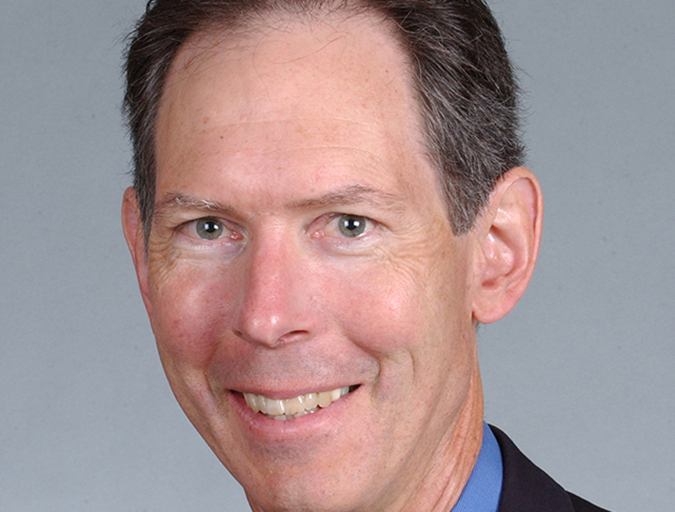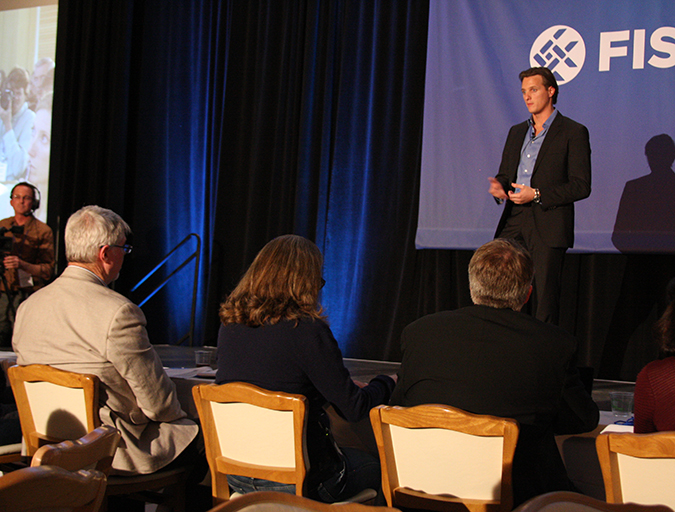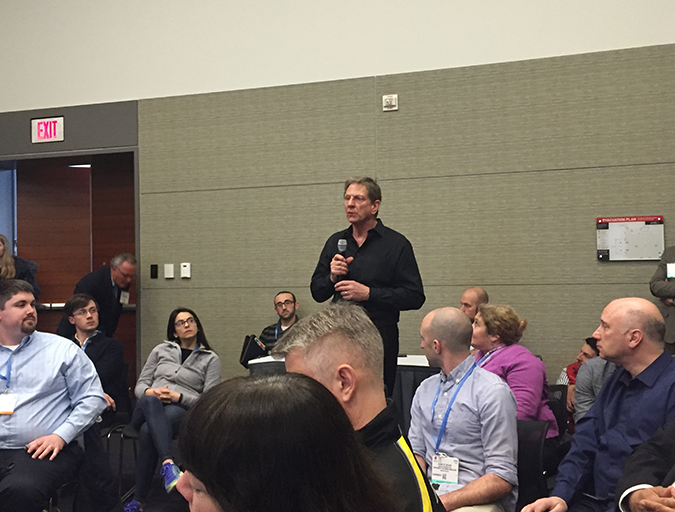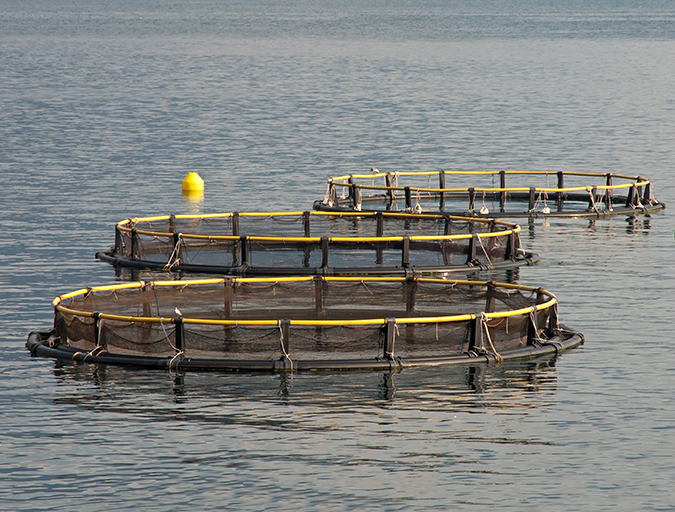Champions of Change recipients say innovation key to industry’s growth and acceptance

Every year for the last eight years the Obama administration has awarded innovators in a range of fields for their transformative contributions to American society. The last installment of these Champions of Change awards, presented in a ceremony held in October, celebrated the work of change-makers in sustainable seafood, from chefs to fishermen to aquaculture advocates.
Aquaculture was represented by several diverse innovators, including Monica Jain, whose social enterprise Fish 2.0 works to develop the field of sustainable seafood; Dr. Kevan Main, head of Mote Marine Laboratory and Aquarium’s aquaculture research program; Byron Encalade, president of the Louisiana Oysterman Association; and Luka Mossman, who works with traditional Hawaiian fishpond aquaculture.
Aquaculture has huge potential but a long way to go toward acceptance in the United States, where much more focus has been placed on ensuring that wild-catch fisheries are sustainable. Aquaculture is arguably the future of the world’s seafood supply, and in the decades ahead farmed seafood may be a primary source of protein for the world’s booming population.
Already, more than 50 percent of the world’s seafood comes from aquaculture, including almost half of the U.S. supply. Still, a mere 4.5 percent of farmed seafood is produced in the Americas, with 88 perfect of farmed seafood originating from Asia.
Do we have the social will to make room for aquaculture in our backyards?
With domestic aquaculture producing such a disproportionally small amount of the farmed fish Americans eat, it’s little wonder that the Champions of Change call for nominations made a nod to the importance of this sector – particularly the ocean-based farming that is needed to supply large amounts of sustainable seafood. The nomination request specified that the White House was looking for “innovators … who are committed to sustainability and development in this growing domestic seafood sector.”
“Growing” is the key word. As Dr. Main points out, the future of sustainable fish production lies with aquaculture. Her research focuses on land-based, recirculating technologies for fish production, but she says that ocean-based aquaculture will be crucial in providing protein to a ballooning world population.
“It was really important to me as an aquaculture scientist that [the awards] recognized the important role that aquaculture will play in the production of sustainable seafood,” she said.
“Everybody acknowledges that we need to grow this industry, but the challenge is to get past some of the misperceptions about how it’s practiced today, and to allow the growth of an industry that can be competitive. I was just really pleased to see that there was the recognition that aquaculture can be done in sustainable ways if we pay attention to innovations that are needed to make the systems interface well with the environment.”
The sector’s future is dependent in part on investment that supports innovation across the industry, which goes beyond support of any one enterprise. This type of investment often comes in the form of grants to assist research and development, and to help various stakeholders in the field connect and collaborate. It’s a type of funding that is lacking for aquaculture right now, according to Jain, whose organization is focused on bringing entrepreneurs and investors together.

“There’s strong investor interest,” she said. “There’s a lot of innovation. Government support is strong. What’s weak is grant funding. There’s not much support that I know of for people to grow the field or to support innovation more broadly.”
One hindrance to such support is that aquaculture falls between wild-catch fisheries and terrestrial agriculture, leaving it an awkward fit for existing regulatory agencies and traditional funders. Wild-catch fisheries have dominated NOAA’s attention, while agriculture is the bailiwick of the U.S. Department of Agriculture. Similarly, private foundations have focused more attention on increasing the sustainability of wild-catch fishing and agriculture than on developing aquaculture.
Dr. Michael Rubino, director of the Office of Aquaculture at the Fisheries Service of the National Oceanic and Atmospheric Administration (NOAA), admits that aquaculture is simply “not yet a top priority in the country.” But he sees potential for its growth, particularly as the political and social will increases to enable the right conditions. He cites lack of access to workable sites for aquaculture along busy coastlines and complex permitting processes as major constraints to the development of the industry.
“If you have access to a site and you have a permit, it’s not as difficult to attract money,” he said. “The investment dollars are there. The technology is there.” The question that remains to be answered is, “Do we have the social will to make room for aquaculture in our backyards?”
Rubino notes that there’s already promising progress: There is a booming oyster-farming sector, and fishermen are branching out into farming clams, mussels, seaweed and fish.
“Fishing and seafood processing companies in the [Pacific Northwest] have acquired local oyster, steelhead and salmon farms. And the seafood industry in the Gulf of Mexico is exploring ways that commercial fishermen and seafood farmers might work together to bring local fish back to regional restaurant tables and supermarkets.”
To push the industry further, he says, we need “social acceptance and the realization that we need to be growing more of our food here at home.”
The local food movement is helping with that, as shoppers increasingly want to know where and how their food is produced. That kind of interest is helping aquaculture fishermen find a place in coastal communities, and their seafood find its way to more of our plates.
And if the Champions of Change awards are any indication, interest at the policy level is increasing accordingly. Combine that with interest among investors and shifting social attitudes about fish farming, and you’ve got a lot of potential.
Jain sees an industry poised for action: “Anyone who’s looking at the seafood field, I’d encourage them to look at aquaculture.”
Now that you've reached the end of the article ...
… please consider supporting GSA’s mission to advance responsible seafood practices through education, advocacy and third-party assurances. The Advocate aims to document the evolution of responsible seafood practices and share the expansive knowledge of our vast network of contributors.
By becoming a Global Seafood Alliance member, you’re ensuring that all of the pre-competitive work we do through member benefits, resources and events can continue. Individual membership costs just $50 a year.
Not a GSA member? Join us.
Author
-
Katherine Gustafson
Katherine is a freelance writer who takes a broad look at food and farming, from GMOs and farm succession planning to the benefits of family dinner and the unique deliciousness of Cheetos. She is the author of Change Comes to Dinner (St. Martin’s Press, 2012), a hopeful look at the entrepreneurs and innovators changing our food system for the better.
Tagged With
Related Posts

Responsibility
Aquaculture Exchange: Michael Rubino, NOAA
Social license – a community’s acceptance and support of an industry’s presence – is a key factor in aquaculture’s growth prospects. It’s a major obstacle U.S. waters, in particular. Michael Rubino of NOAA Fisheries discusses the challenges.

Innovation & Investment
Like fish in a barrel: Seafood innovators land investor interest
At Fish 2.0, it’s seafood, Silicon Valley style. Aquaculture companies gave their best pitches to investors and two left Palo Alto, Calif., as winners. Founder Monica Jain says the competition highlights a financial gap that must be bridged for the industry to advance.

Intelligence
Boston brainstorm: Getting consumers to embrace aquaculture
In a discussion format somewhat unique to the bustling halls of Seafood Expo North America, aquaculture backers lamented the lackluster U.S. consumer acceptance for farmed fish.

Intelligence
Rubino, Knapp lay out ‘political economics’ of U.S. aquaculture
Michael Rubino and Gunnar Knapp list key reasons why U.S. marine aquaculture has been limited to a scale far below its vast potential.


